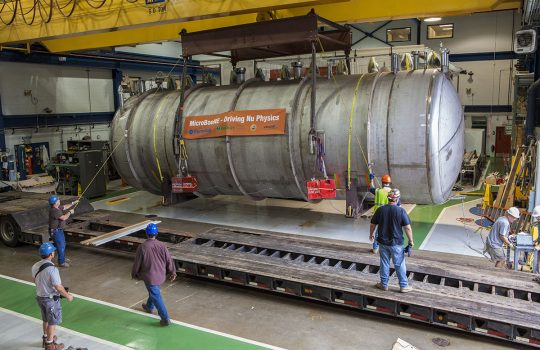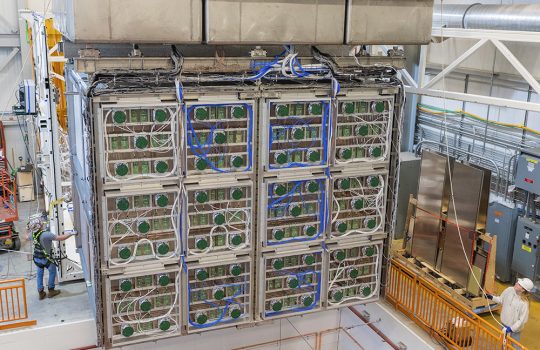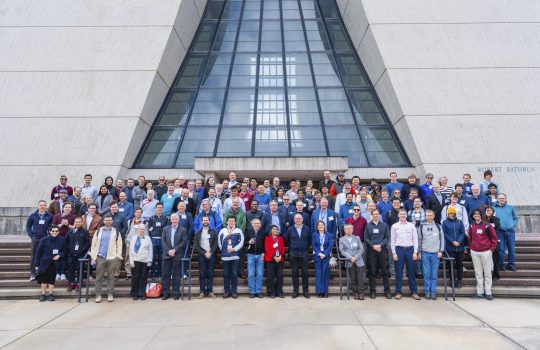U.S. Secretary of Energy Chris Wright had the opportunity to see first-hand how Fermi National Accelerator Laboratory drives American leadership in particle physics and leverages the lab’s unique capabilities to unleash American innovation and discovery, during his recent visit.
Secretary Wright viewed Fermilab’s Main Injector, one of the laboratory’s five particle accelerators and a contributor to some of Fermilab’s groundbreaking discoveries. The Main Injector is notable for producing the world’s most powerful high-energy neutrino beam.
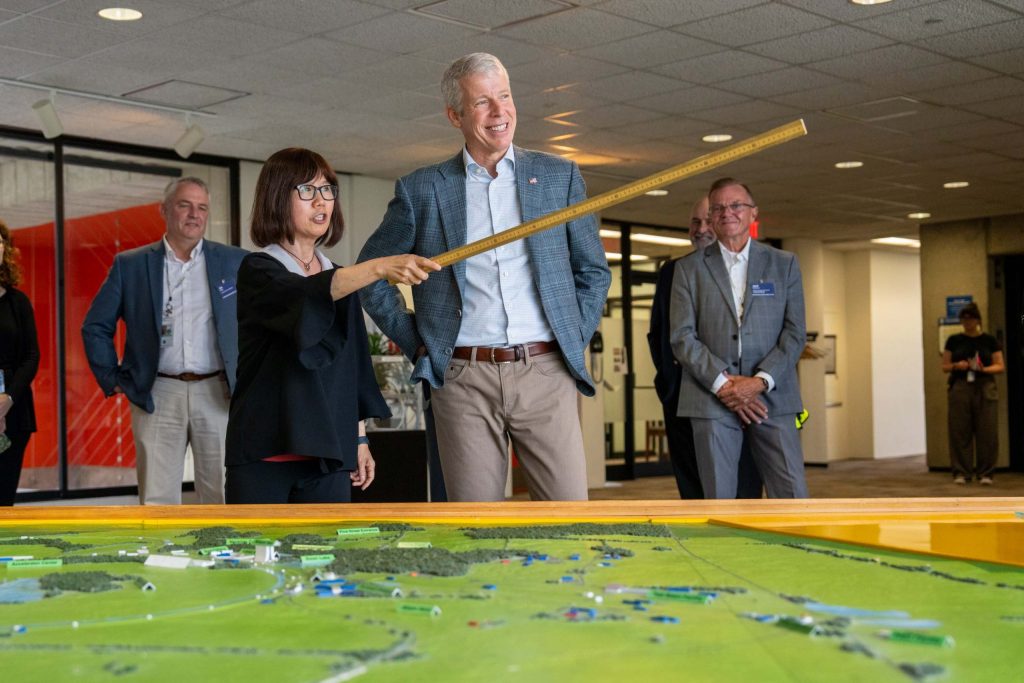
He also had the opportunity to view Fermilab’s key flagship projects intended to define the future of particle physics and sustain U.S. scientific preeminence for decades to come. This included a visit to Fermilab’s underground laboratory to see a prototype detector for the Long-Baseline Neutrino Facility-Deep Underground Neutrino Experiment (LBNF-DUNE) project, which will use neutrinos to probe the Standard Model of particle physics and increase our understanding of why our universe is dominated by matter. LBNF-DUNE’s near detectors in Illinois will use artificial intelligence tools to analyze neutrino events in liquid argon detectors and classify different particle types.
In addition, Secretary Wright saw work underway on the Proton Improvement Plan-II (PIP-II), which will generate an unprecedented stream of neutrinos for LBNF-DUNE and provide powerful proton beams to other experiments. To mark his visit, Wright signed one of the PIP-II cryomodules, a crucial component of the accelerator that will send a beam of neutrinos 800 miles though the Earth to the LBNF-DUNE far detectors in Lead, South Dakota.
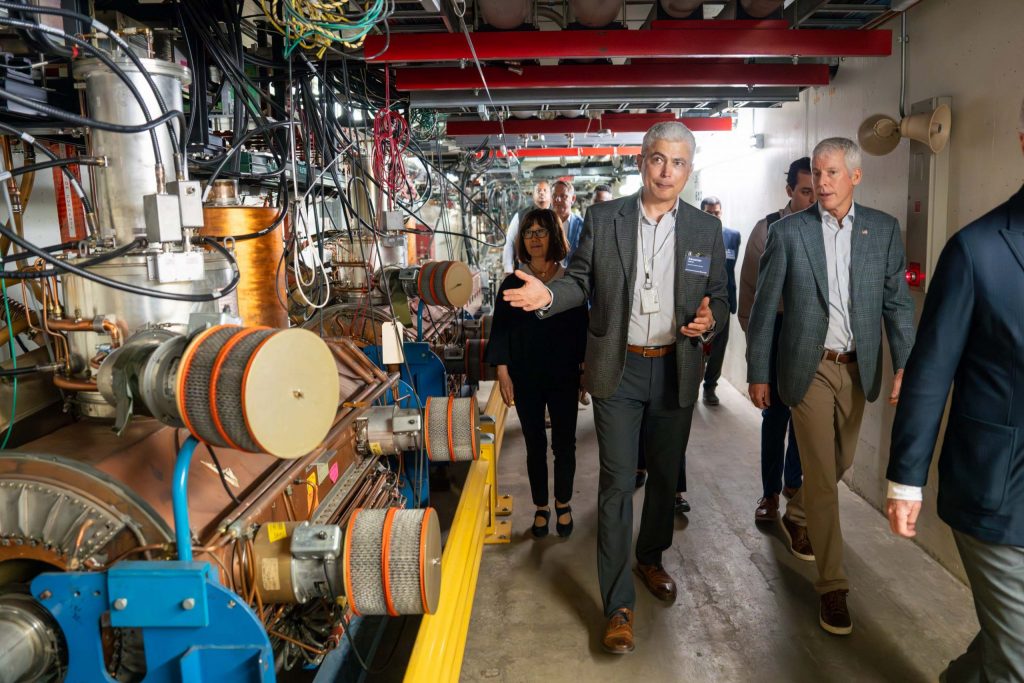
Secretary Wright’s visit also included a tour of Fermilab’s Superconducting Quantum Materials and Systems Center (SQMS), a collaboration of 36 partner institutions composed of national labs, academia and industry. At SQMS, one of DOE’s five National Quantum Information Science Research Centers, Secretary Wright learned more about Fermilab’s support for developing and deploying quantum computers, and the unprecedented computational opportunities and impacts they will have in science and society.
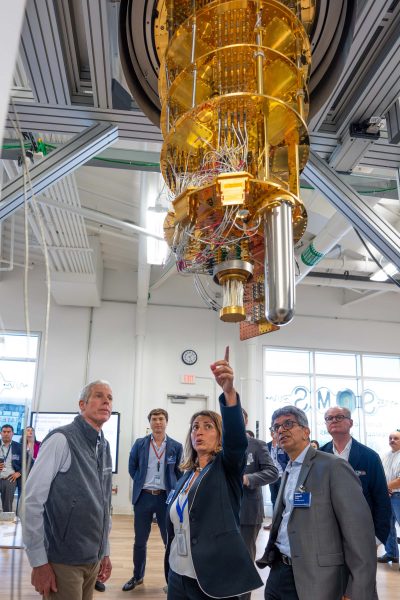
Secretary Wright then saw the important work being done by the Applied Physics and Superconducting Technology Division (APST-D) at the lab, where researchers are pursuing a highly innovative development program in cryogenics, superconducting magnets and superconducting radio frequency cavities, all crucial for next-generation particle accelerators and quantum research. Among its many projects, APST-D is constructing superconducting magnets for the high-luminosity upgrade to the Large Hadron Collider (LHC) at CERN.
Inside Fermilab’s iconic Wilson Hall, the Secretary viewed the Remote Operations Center for the CMS experiment at CERN. CMS is one of two particle detectors at the Large Hadron Collider that confirmed the existence of the Higgs boson, and Fermilab is the host institution for the U.S. collaboration that contributed to the historic discovery.
At the conclusion of his visit, Secretary Wright addressed a packed auditorium.
“We have to drive energy technology forward.” Wright said. “Nuclear is incredibly promising. Fusion — I believe with the help of AI, with the help of brilliant scientists like in this room — I believe we’re going to have multiple pathways to harness fusion energy.”
“We have national labs that work in applied science, engineering … Just as important, and maybe even more inspiring to me is the basic science that is done in our labs,” Wright added. “The leader of the pack is right here at Fermi, where a huge amount of the effort is just trying to understand the basic structure of the cosmos.”
Secretary Wright’s visit marked his 10th stop in his goal to visit all 17 of the U.S. Department of Energy’s national laboratories this year. His visit coincided with this year’s annual Fermilab Users and Affiliates meeting, which brings together hundreds of researchers in the broad Fermilab community and illustrates how Fermilab leads collaborative efforts across U.S. national labs and international research institutions to better solve today’s most complex scientific challenges.
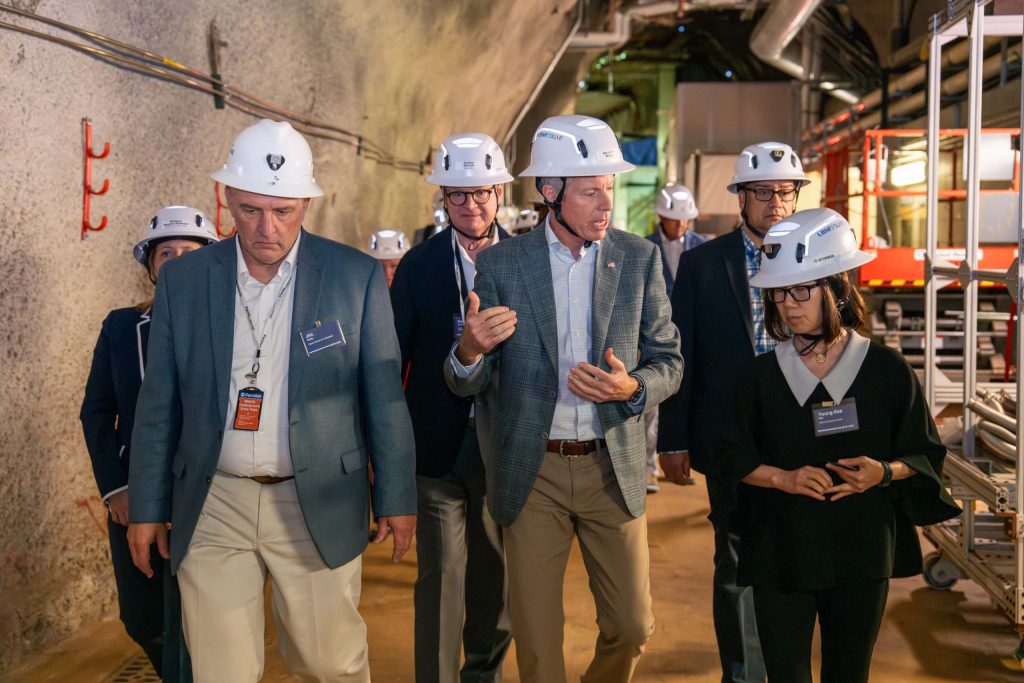
“It was an honor to have Secretary Wright visit Fermilab to see how we serve today as the neutrino capital of the world to advance scientific innovation, and our work underway to ensure Fermilab contributes to groundbreaking discoveries into the future,” Fermilab Interim Director Young-Kee Kim said. “Secretary Wright deeply appreciates the benefits of basic scientific research, and the role of laboratories like Fermilab in America’s future. Most importantly, his visit provided him the opportunity to meet and engage with the men and women of the Fermilab community — the key to our scientific success.”
Fermi National Accelerator Laboratory is America’s premier national laboratory for particle physics and accelerator research. Fermi Forward Discovery Group manages Fermilab for the U.S. Department of Energy Office of Science. Visit Fermilab’s website at www.fnal.gov and follow us on social media.

